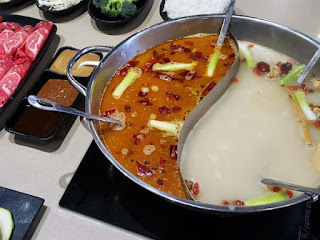Hot Pot: Exploring the Traditional Chinese Dish
Hot pot, also known as steamboat, is a traditional Chinese dish that has captivated the hearts and taste buds of people for centuries. It is a communal dining experience where friends and family gather around a simmering pot of flavorful broth, cooking a variety of ingredients at the table. In this article, we will take a closer look at hot pot, its origins, ingredients, cooking methods, and cultural significance.
The Origins of Hot Pot
Hot pot has a long and rich history in China, dating back to the Tang Dynasty. It is believed to have originated in northern China, where the cold winters inspired the creation of a hearty and warming meal. Over time, hot pot spread to other regions of China, each adding their own unique flavors and ingredients to the dish. Today, hot pot is enjoyed not only in China but also in many other countries around the world.
The Essential Components of Hot Pot
Hot pot consists of three essential components: the broth, the ingredients, and the dipping sauces. The broth serves as the foundation of the dish, providing the base flavor for cooking the ingredients. It can be made with a variety of ingredients, such as bones, vegetables, herbs, and spices, creating different flavors and levels of spiciness. The ingredients for hot pot are diverse and customizable, ranging from thinly sliced meats (such as beef, lamb, or pork) and seafood (such as shrimp or fish balls) to an assortment of vegetables, tofu, noodles, and dumplings. Dipping sauces, made from various condiments like soy sauce, sesame oil, garlic, and chili paste, add an extra burst of flavor to the cooked ingredients.
Cooking Methods and Techniques
Hot pot is a unique cooking method that involves placing raw ingredients into the simmering broth and allowing them to cook. Each person at the table can cook their desired ingredients at their own pace, creating a personalized dining experience. The cooking time varies depending on the type and thickness of the ingredient. Thinly sliced meats, for example, take only a few seconds to cook, while denser vegetables or dumplings may require a few minutes. Utensils like wire mesh spoons or chopsticks are used to retrieve the cooked food from the pot, and it is then dipped into the preferred sauce before being savored.
The Social and Cultural Significance of Hot Pot
Hot pot holds great social and cultural significance in Chinese society. It is not only a delicious meal but also a symbol of togetherness and unity. Gathering around the hot pot table encourages interaction and conversation among diners, fostering a sense of community and shared experience. It is often enjoyed during festive occasions, family gatherings, and special celebrations. The act of cooking and sharing food from a communal pot creates a warm and intimate atmosphere, strengthening relationships and creating lasting memories.
Regional Variations of Hot Pot
As hot pot spread throughout China, different regions developed their own variations of the dish, each showcasing local flavors and culinary traditions. Some notable regional variations include:
Sichuan Hot Pot: Known for its fiery and numbing flavors, Sichuan hot pot features a spicy broth made with Sichuan peppercorns and chili peppers. It is beloved by spice enthusiasts seeking a tingling sensation.
Cantonese Hot Pot: Cantonese hot pot focuses on a clear and delicate broth, allowing the natural flavors of the ingredients to shine. It is often enjoyed with fresh seafood and premium meats.
Mongolian Hot Pot: Mongolian hot pot is characterized by its rich and hearty broth, usually made with lamb bones and various herbs. It is popular in the northern regions of China and is a favorite during cold winters.
These are just a few examples of the diverse regional variations of hot pot found throughout China. Each variation offers a unique culinary experience, showcasing the local ingredients and culinary traditions of the respective regions.
Hot Pot Beyond China
In recent years, hot pot has gained popularity beyond China's borders. It can now be found in various countries around the world, often with adaptations to suit local tastes and ingredients. In cities with a vibrant Asian culinary scene, hot pot restaurants have become destinations for food lovers seeking an interactive and flavorful dining experience. The global popularity of hot pot demonstrates its universal appeal and the joy it brings to people of different cultures.
Conclusion
Hot pot is more than just a dish; it is a celebration of flavors, togetherness, and cultural traditions. Originating from China, hot pot has evolved into a beloved culinary experience enjoyed by people worldwide. Whether you prefer the spicy kick of Sichuan hot pot or the delicate flavors of Cantonese hot pot, this communal dining experience offers a delightful journey for the senses. So gather your loved ones, prepare the simmering broth, and embark on a hot pot adventure that will warm your heart and tantalize your taste bud









No comments:
Post a Comment